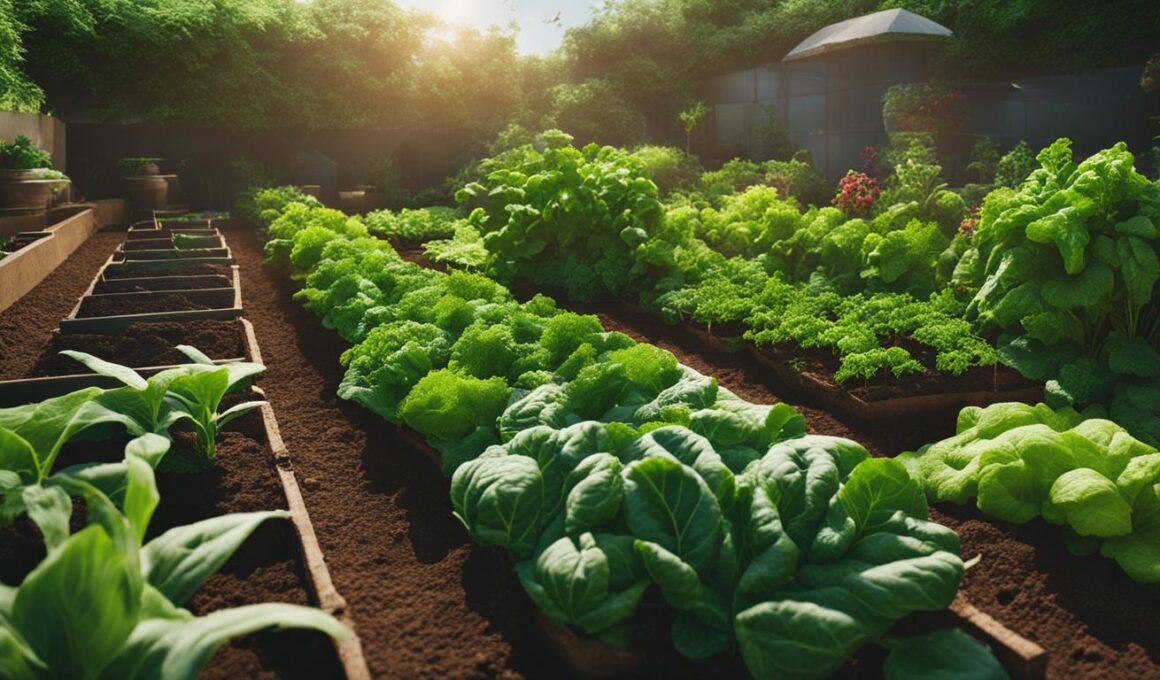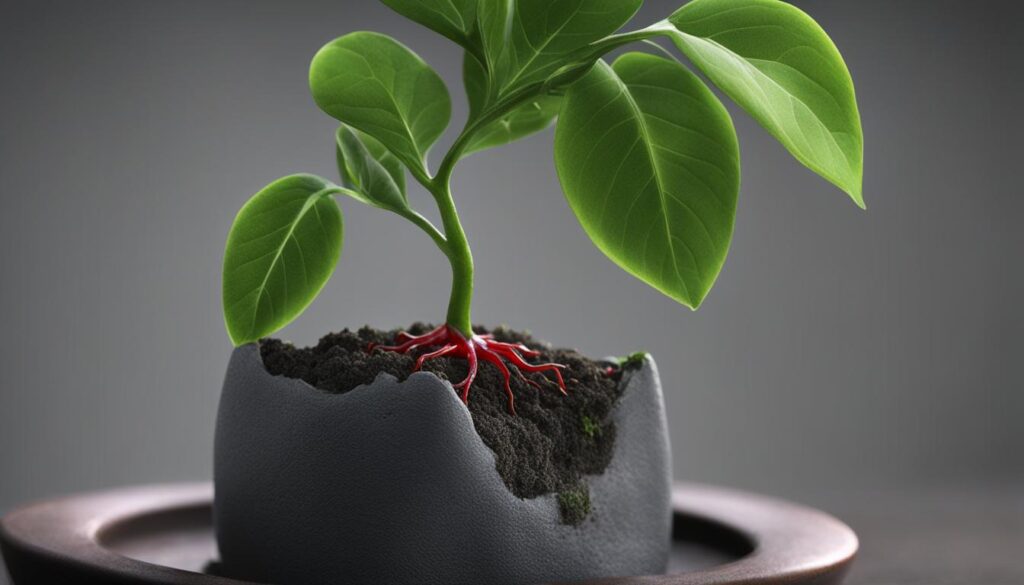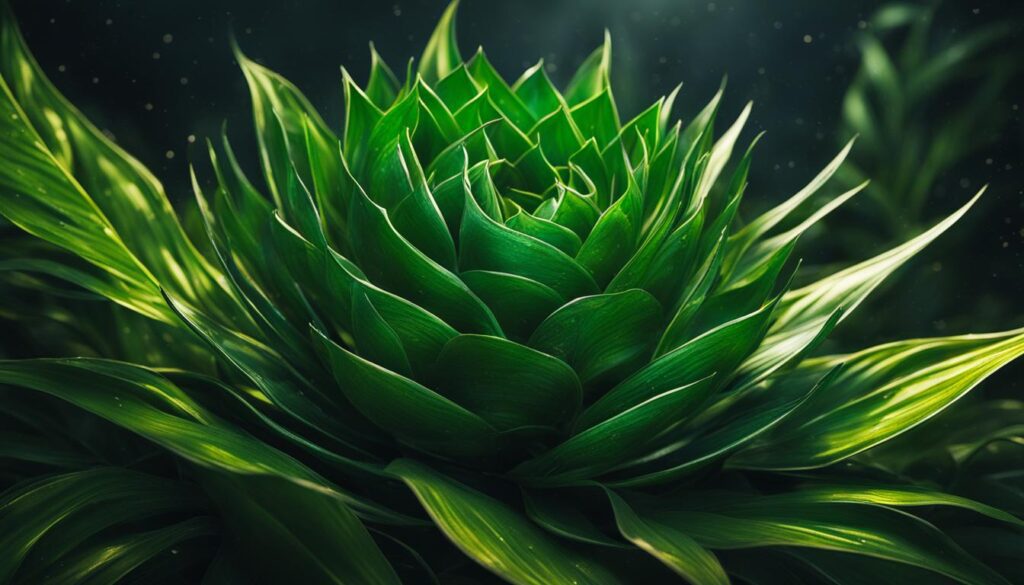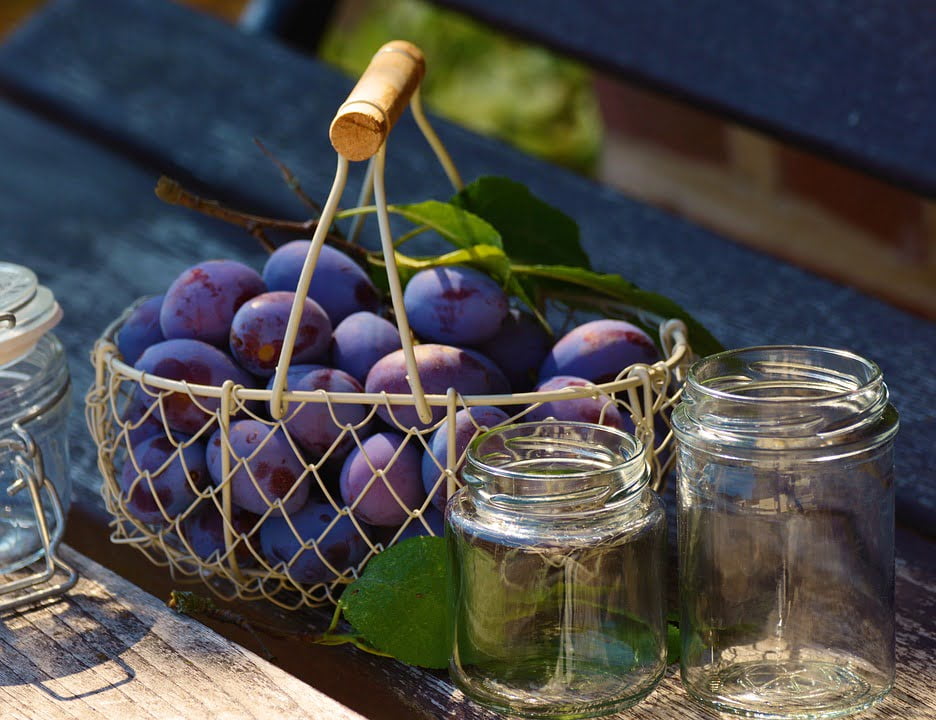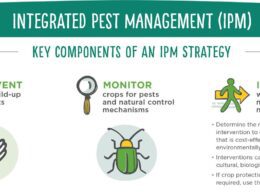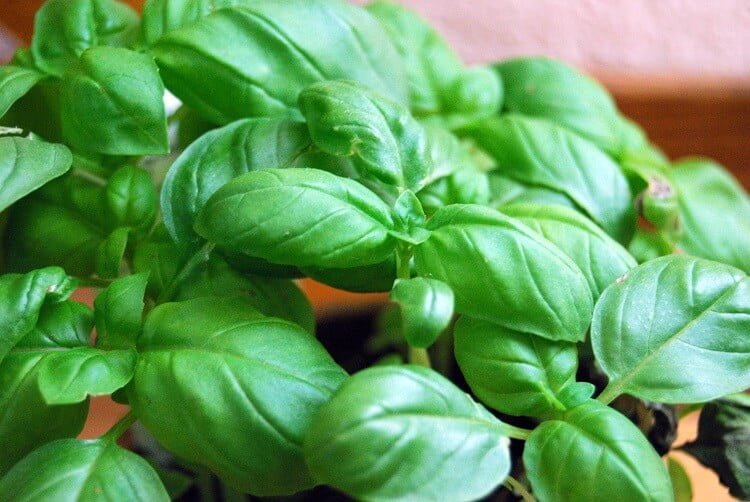Iron is an essential element for the health and vitality of plants. Its importance lies in its role in the production of chlorophyll, which is crucial for photosynthesis, and in the movement of oxygen throughout plant tissues. Without sufficient iron, plants can suffer from chlorosis, a condition characterized by yellowing leaves and poor enzyme function. To maintain optimal plant health, it is important to ensure a reliable source of iron for plants.
Plants can obtain iron from various sources in their environment. One common source is ferric oxide, a compound present in many soils. As plants grow, their roots absorb iron from the soil, making it available for use in essential processes. Additionally, decomposing plant matter also releases iron into the soil, further enriching the available iron content.
Iron deficiency in plants can have detrimental effects on their growth and overall well-being. Plants lacking sufficient iron may exhibit stunted growth, reduced flower production, and compromised ability to fight off pests and diseases. To address iron deficiency in plants, it is important to identify the underlying cause. Adding iron-rich fertilizers to the soil can provide a direct source of iron for plants, while adjusting the pH balance of the soil can optimize iron availability.
Post Summary
- A good source of iron for plants is crucial for their healthy growth and development.
- Plants can obtain iron from ferric oxide in soil and decomposing plant matter.
- Iron deficiency in plants can lead to chlorosis, yellowing leaves, and poor enzyme function.
- Iron fertilizers and adjusting soil pH can help correct iron deficiency in plants.
- Ensuring a reliable source of iron is essential for promoting optimal plant health.
For more information on the importance of iron in plants and how to address iron deficiency, continue reading the next sections of this article.
Understanding Chelated Iron: What Is It and How Does It Help Plants?
Iron deficiency can have a detrimental effect on plants, leading to symptoms such as chlorosis and poor enzyme function. To address this issue, chelated iron supplements can be used to support plant health. But what exactly is chelated iron and how does it help plants?
Chelated iron is a form of iron supplement that has been treated with a chelator, which helps improve its absorption and availability to plants. It is particularly useful in addressing iron chlorosis, a type of iron deficiency where plants are unable to absorb iron nutrients from the soil effectively. By providing plants with chelated iron, their iron uptake and utilization can be optimized, leading to enhanced chlorophyll function and improved plant metabolism.
Chelated iron can be applied to plants through foliar sprays or as a soil supplement. Its effectiveness can be further enhanced by combining it with vitamin C-rich foods, which helps increase iron absorption. The use of chelated iron can be a valuable tool in maintaining healthy and vibrant plants, ensuring they receive the necessary iron they need to thrive.
Benefits of Chelated Iron:
- Enhances iron availability for plants
- Supports chlorophyll function
- Promotes energy transfer and plant metabolism
- Addresses iron chlorosis
Chelated iron can be an effective solution for plants experiencing iron deficiency, helping them recover and thrive. However, it is essential to follow the recommended dosage and application instructions provided by manufacturers to avoid any adverse effects on the plants. Consulting with a plant care professional can also provide valuable guidance in utilizing chelated iron and optimizing its benefits for plant health.
Plant-Based Sources of Iron: An Option for Vegetarian Diets
For vegetarians and vegans, obtaining sufficient iron from plant-based sources is crucial for maintaining optimal health. Plant-based iron, also known as non-heme iron, can be found in a variety of vegetarian foods and is an essential mineral for the human body.
There are numerous iron-rich vegetarian foods that can help meet your iron needs. Legumes such as lentils, chickpeas, and soybeans are excellent sources of iron. Leafy green vegetables like spinach and kale are also rich in iron. Other plant-based sources include tofu, tempeh, quinoa, nuts and seeds, dark chocolate, and fortified meals.
Combining these iron-rich foods with sources of vitamin C can enhance iron absorption. Vitamin C-rich foods such as citrus fruits, bell peppers, and strawberries can help increase the absorption of non-heme iron. Consider incorporating these foods into your meals to maximize the benefits of plant-based iron.
Iron Content in Selected Vegetarian Foods
| Food | Iron Content (mg per serving) |
|---|---|
| Spinach (1 cup) | 6.4 |
| Tofu (4 ounces) | 6.4 |
| Lentils (1 cup, cooked) | 6.6 |
| Chickpeas (1 cup, cooked) | 4.8 |
| Quinoa (1 cup, cooked) | 2.8 |
It is important to note that plant-based sources of iron, particularly non-heme iron, may not be as readily absorbed by the body as heme iron from animal sources. To ensure you are meeting your iron needs, it is recommended to consult a healthcare professional for personalized advice and testing if iron levels are a concern.
The Importance of Iron: Fueling Vital Functions and Health Benefits
Iron plays a crucial role in maintaining vital functions and promoting overall health. It is an essential mineral that is involved in various processes within the human body. One of its key functions is its role in oxygen transport, as it is a critical component of hemoglobin, the protein responsible for carrying oxygen in the blood.
Iron is also necessary for energy production, as it is involved in the synthesis of ATP (adenosine triphosphate), the primary energy currency of the body. Adequate iron levels support the creation of healthy red blood cells, which deliver oxygen to cells and tissues, ensuring optimal energy levels and vitality.
| Functions of Iron in the Body: | Health Benefits: |
|---|---|
| • Oxygen transport | • Improved endurance |
| • Energy production | • Reduced fatigue |
| • Immune system function | • Enhanced cognitive function |
| • Muscular performance | • Healthy pregnancy |
Iron also plays a crucial role in supporting immune system function, helping to protect the body against infections and diseases. It is involved in the production of immune cells and the regulation of immune responses, ensuring a robust and effective immune system.
Furthermore, iron is essential for cognitive function, as it is involved in the synthesis of neurotransmitters and the maintenance of brain health. Adequate iron levels support optimal brain function, memory, and overall cognitive performance.
In conclusion, iron is a vital nutrient that fuels vital functions and offers numerous health benefits. Ensuring an adequate intake of iron is crucial for maintaining optimal energy levels, supporting immune system function, promoting cognitive health, and overall well-being.
| Iron and Oxygen Transport: | Heme iron from animal sources is more readily absorbed by the body compared to non-heme iron from plant sources. |
|---|---|
| Iron and Hemoglobin Production: | Iron is essential for the formation of hemoglobin, which carries oxygen in the blood. |
| Iron Deficiency Anemia: | Inadequate iron levels can lead to iron deficiency anemia, resulting in symptoms like fatigue and shortness of breath. |
To optimize iron intake, it is important to consume a balanced diet that includes sources of heme iron from animal products, such as meat, poultry, and fish, as well as non-heme iron from plant-based foods like leafy greens, legumes, and fortified grains. Combining iron-rich foods with sources of vitamin C, such as citrus fruits, can also enhance iron absorption.
It is essential to consult with a healthcare professional if you suspect you have iron deficiency anemia or if you have any concerns about your iron levels. They can provide personalized advice and recommend appropriate interventions, such as iron supplementation, to address any deficiencies and support optimal oxygen transport and overall health.
Boosting Energy Levels: Iron’s Impact on Reducing Fatigue and Improving Vitality
Iron plays a crucial role in maintaining optimal energy levels and reducing fatigue. Iron is involved in the production of healthy red blood cells, which are responsible for transporting oxygen throughout the body. Adequate oxygen delivery is essential for the production of adenosine triphosphate (ATP), the energy currency of cells. Iron also supports mitochondrial function, which is responsible for generating ATP.
When iron levels are insufficient, oxygen transport to the muscles becomes compromised, leading to fatigue and decreased endurance. Iron deficiency can also affect muscle function, causing weakness and decreased performance. To prevent these symptoms, it is important to ensure an adequate intake of iron through a balanced diet or supplementation.
Incorporating iron-rich foods into your diet can help boost energy levels and overall vitality. Some examples of iron-rich foods include lean meats, poultry, fish, legumes, dark leafy greens, and fortified cereals. Pairing these foods with sources of vitamin C, such as citrus fruits or bell peppers, can enhance iron absorption. If you suspect an iron deficiency, it is important to consult with a healthcare professional for a proper diagnosis and appropriate treatment.
The Role of Iron in ATP Production
ATP production is a key component of energy metabolism in the body. Iron plays a critical role in this process by facilitating the electron transfer chain, which ultimately leads to the production of ATP. Without sufficient iron, ATP synthesis may be impaired, resulting in decreased energy levels and fatigue. Ensuring an adequate intake of iron is therefore essential for maintaining optimal ATP production and energy levels.
Conclusion
Iron is a vital nutrient for plants, playing a crucial role in their health and growth. The good source of iron for plants includes ferric oxide in soil and decomposing plant matter. Iron deficiency can lead to chlorosis and poor enzyme function in plants. To address iron deficiency, iron supplementation in the form of chelated iron can be used effectively.
For vegetarians, plant-based sources of iron such as legumes, spinach, and fortified foods can provide sufficient iron intake. It is important to ensure an adequate intake of iron for plant health. In humans, iron is essential for vital functions and offers various health benefits, including energy production, immune system support, and cognitive function.
Iron supplementation is crucial for both plants and humans to maintain optimal health and overall well-being. Whether you are tending to your garden or focusing on your own nutritional needs, incorporating iron-rich sources is key to ensuring a good supply of this important nutrient.
FAQ
What is the importance of iron in plants?
Iron is a crucial element for healthy plant life as it is necessary for the production of chlorophyll and the movement of oxygen in plants.
How do plants obtain iron?
Plants can obtain iron from various sources, including ferric oxide in soil and decomposing plant matter.
What are the signs of iron deficiency in plants?
Iron deficiency in plants can lead to chlorosis (yellowing leaves) and poor enzyme function.
How can iron deficiency in plants be corrected?
Iron deficiency in plants can be corrected by adding an iron fertilizer or adjusting the pH balance of the soil.
What is chelated iron and how does it help plants?
Chelated iron is a form of iron supplement for plants that is treated with a chelator to ensure proper absorption. It is used to address iron chlorosis, a type of iron deficiency where plants are unable to absorb iron nutrients from the soil.
How does chelated iron support plant health?
Chelated iron helps plants by increasing iron availability, supporting chlorophyll function, and promoting energy transfer and plant metabolism.
How can chelated iron be applied to plants?
Chelated iron can be applied through foliar sprays or soil supplements.
Can combining chelated iron with vitamin C enhance its effectiveness?
Yes, combining chelated iron with vitamin C-rich foods can enhance its effectiveness.
What is plant-based iron?
Plant-based iron, also known as non-heme iron, is an essential mineral for the human body.
How can vegetarians obtain sufficient iron from their diets?
Vegetarians can obtain sufficient iron from their diets by consuming iron-rich vegetarian foods such as legumes, spinach, tofu, tempeh, quinoa, nuts and seeds, dark chocolate, and fortified meals.
How can iron absorption from plant-based sources be enhanced?
Combining iron-rich vegetarian foods with vitamin C sources can enhance iron absorption.
What are the health benefits of iron in the human body?
Iron plays a critical role in oxygen delivery, energy creation, immune system function, cognitive function, muscular performance, healthy pregnancy, and overall well-being.
What are the symptoms of iron deficiency in humans?
Iron deficiency can lead to anemia and symptoms such as fatigue, weakness, and poor activity tolerance.
What are the sources of iron for humans?
Both animal and plant-based sources of iron can provide the necessary intake for humans.
How does iron support oxygen transport and hemoglobin production?
Iron plays a critical role in oxygen transport and the production of hemoglobin, the protein responsible for carrying oxygen in the blood.
How does iron impact energy levels and reduce fatigue in humans?
Iron boosts energy levels by promoting the production of healthy red blood cells, facilitating oxygen transport, supporting ATP synthesis, and enhancing muscle function.
How does iron contribute to overall muscle performance?
Having sufficient iron levels ensures the delivery of oxygen to cells, supports the production of ATP, maintains mitochondrial function, and enables proper muscle performance.
How can iron intake be optimized for humans?
Consuming iron-rich foods, particularly those high in heme iron from animal sources, can help prevent iron deficiency. Combining iron-rich foods with vitamin C sources can further optimize iron absorption.
What is the conclusion regarding iron as a source of nutrients for plants and humans?
Iron is a vital nutrient for plants and humans, and ensuring an adequate source of iron is essential for their health and growth.
What Are Some Good Sources of Iron for Plants to Help Prevent Deficiency Symptoms?
Iron deficiency symptoms in plants can be prevented by using good sources of iron such as iron chelates, iron sulfate, and iron EDTA. These can be applied to the soil or sprayed onto the leaves. Additionally, using compost and organic matter can also help improve iron availability in the soil.





